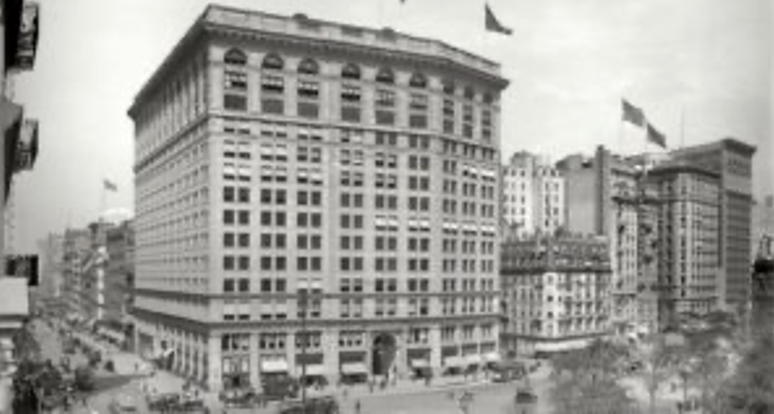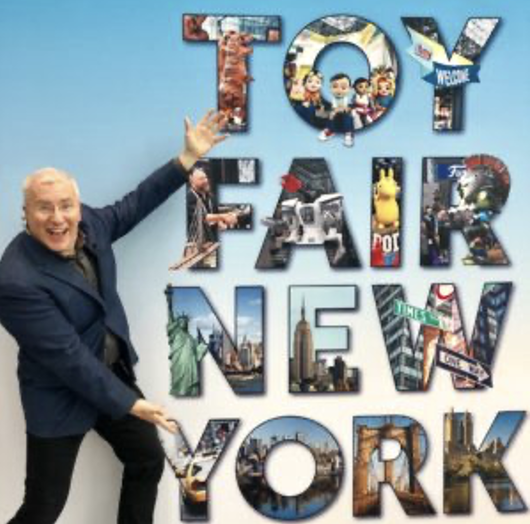Christopher Byrne: New York Toy Fair: A Movable Feast
by Christopher Byrne | 14 Sep 2023
Industry Commentary, Op-Ed

Though it may not seem like it to people who have only been in the toy business a scant decade or so, even longer, historically the dates of Toy Fair have moved over the last 120 years as the demands of a dynamic industry shifted. Its primary purpose has always been to sell toys to retailers—and get them made and on shelves for the holiday season.
In the early years, starting with the first organized Toy Fair in 1903, the idea was to promote the fledgling U.S. toy industry and promote domestic products at a time when most manufactured toys came from Europe. As the show grew—and it was only open to U.S. manufacturers at the time—it ran in mid-April and May. (A.C. Gilbert one of the founders of the Toy Association and creator of Erector sets, said, “Toys doesn’t not mean, ‘made in Germany.”) However, as buying patterns changed, toys became more sophisticated which increased production time, and, most importantly, production moved overseas; Toy Fair moved earlier in the year. In 1930, Toy Fair ran from February 2 to March 13. It continued moving earlier—and getting shorter, and one of the first two-week fairs was in 1960, the first two weeks of March. For many years, Toy Fair held the title as the longest-running trade show in the country.
It’s only since the early-to-mid-1970s that Toy Fair settled into its mid-February timeslot, though it still spanned two weeks, which were crowded with appointments all day, every day. It was also a time when all of New York City turned into toyland. Everyone in the city from cab drivers to restaurateurs were talking toys. It also became a national media event, a showplace of stunts and parties, in addition to the necessary goal of selling toys. Parties and promotions were lavish, and every night was a celebration. (Read my article in the October Toy Book for a look back at some of the hijinks and hilarity.)

(Toy Center)
No matter when the actual dates were, the goal of the Toy Association over the years was to unify the disparate toy industry and make it possible for manufacturers who had to travel to meet with the hundreds of retailers at the time, a daunting task for smaller companies as jobbers lugged sample cases on trains from whistle stop to whistle stop. (Think of the opening of The Music Man, if you want a romanticized idea of all that.) The Toy Association wanted to expand the trade show to make the process more efficient. In fact, that was the statement of the Toy Industry Association in 1949. “The one and only purpose of Toy Fair is to decrease the cost of buying and selling.”
And here we are in 2023, with Toy Fair at the end of this month. I’ve talked to dozens of manufacturers over the past few months about the time shift, and there has been a wide range of responses and opinions. If there is one prevailing attitude, however, it’s “wait and see.” It’s not as if this shift came out of the blue. Historically early fall has been a time when retailers committed to spring items and had early looks at concepts for the next holiday season. Whether it took place in company showrooms, at retailers’ headquarters, or, recently, on Zoom, this is an important time in the toy cycle; it’s just not been formalized in the same way. Sure, things will be different. It’s doubtful that all eyes will be on New York to see what’s next, and there are one or two things happening that are taking the attention of the national media. (I know. Darn.)
Having been kicking around this business for most of my adult life and having had the distinct privilege of being an observer, it’s always amused me that whenever something has happened for a couple of years, people think that’s the way it’s always been. Oh, and change requires adjustment both from a business standpoint and emotionally for many long-time industry players.
New York Toy Fair 2023, though, is likely to be a working show. I’ll miss some of the circus atmosphere, but that hasn’t been the case for many years, though it’s a wonderful memory and I’m glad I was there then. What has been the case is that the toy business—like the toys themselves—will continue to evolve and respond to changing kids and conditions. It’s still going to be a place where we all come to play.
See you there!

Christopher Byrne is a 30-plus year veteran of the toy industry. He’s an independent researcher, analyst, historian, and consultant. Find him at his consumer-facing site, TheToyGuy.com.
Related Product
Related Blogs
Recent Blogs

General
McHALE DESIGN CASE STUDY: MONSTERVERSE- THE LEGEND CONTINUES…

General
Build-A-Bear Celebrates National Teddy Bear Day with Donation to The Toy Foundation™

Industry Commentary, Op-Ed
Toy Foundation Auction is Now Open for Your Bids

Industry Commentary, Op-Ed
Bracelets, Stickers, and Viral Fame: The Story Behind Sky Castle Toys’ Sticki Rolls

Biographies and Interviews
Chrissy Fagerholt: Luck is when Preparation Meets Opportunity!
See more
Recent Wiki

BOOK REVIEWS
Book Review: Storm: Dawn of a Goddess by Tiffany D. Jackson

BOOK REVIEWS
Book Review: Erno Rubik and his Magic Cube by Kerry Aradhya

BOOK REVIEWS
Game Review: Trip Chaser

COMPANIES
Learning Express Toys Hosts 25th Annual Convention & Toy Expo at JW Marriott Tucson

MISCELLANEOUS
Submit Your LA Showroom Details for 2025 Toy Previews
See more
POP's Got Talent

POP Entertainment
Randy Klimpert Shares his Ukulele Collection

POP Entertainment
Steve Casino Peanut Art

POP Entertainment
Everyone's Talking about POP!

POP Entertainment
Princess Etch - a Multi-Talented Etch A Sketch Artist

POP Entertainment
Joseph Herscher of Joseph' s Machines.
See more
Recent POPcast

Hidden Role: The Brains Behind your Favorite Games
Connie Vogelmann designed Apiary & Wyrmspan!

Hidden Role: The Brains Behind your Favorite Games
Bob Fuhrer... Is THE Crocodile Dentist!

Hidden Role: The Brains Behind your Favorite Games
Tom Dusenberry... Bought Atari, Wizards of the Coast, and Avalon Hill!

Hidden Role: The Brains Behind your Favorite Games
Matt Leacock created Pandemic... the game!

Hidden Role: The Brains Behind your Favorite Games
Scott Brown and Tim Swindle... are Launching a New Sport!
See more
POPDuos

POPDuos: Interviews with Legends and Leaders
POPDuo: Richard Dickson, Mattel’s President & COO, and Kedar Narayan, Young Inventor Challenge AMB

POPDuos: Interviews with Legends and Leaders
POPDuo: Will Shortz and Josh Wardle

POPDuos: Legends and Leaders Explore Creativity
POP Duo: Elan Lee, Co-Founder, Exploding Kittens.and Jeff Probst, Host and Exec Producer, Survivor

POPDuos: Legends and Leaders Explore Creativity
POP Duo: David Fuhrer, MNG Director, Blue Sq Innovations & Shawn Green, past Dodgers & Mets MLB Star

POPDuos: Legends and Leaders Explore Creativity
POP Duo: Bob Fuhrer, Founder, Nextoy and Tom Fazio, Golf Course Designer
See more
















